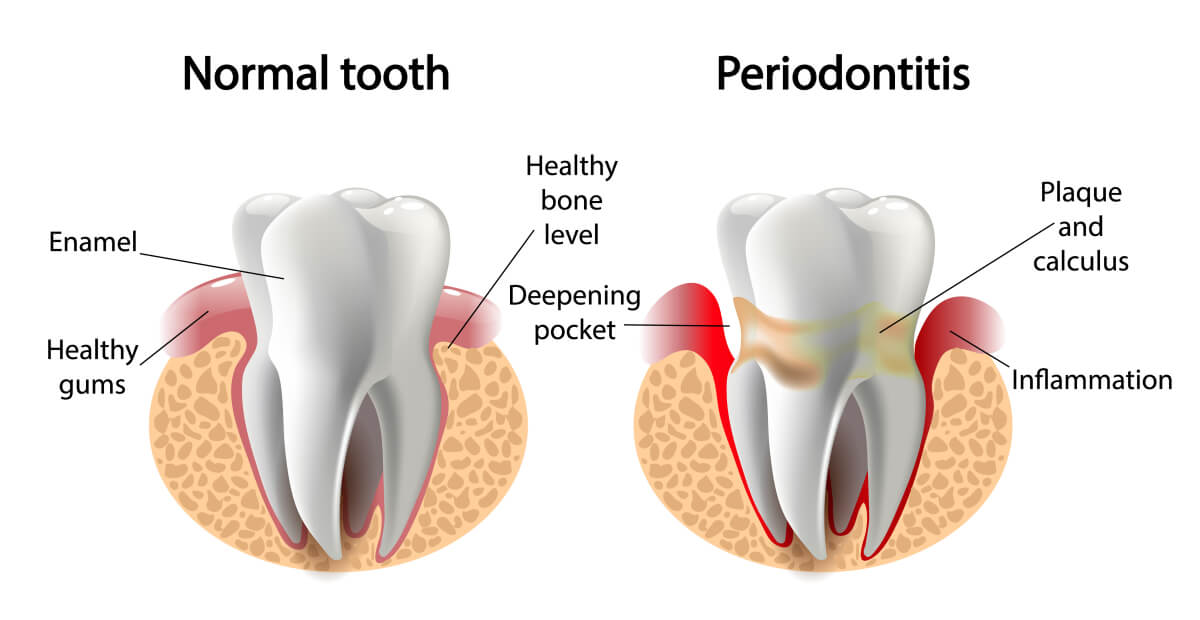In order to preserve excellent dental health and stop the spread of gum disease, periodontal therapy is essential. It is a bacterial infection that damages the teeth’s gums and supporting tissues. If left unattended, it can cause tooth loss and harm one’s general health.
The ability of periodontal therapy to slow the spread of the condition, cure symptoms, and protect oral health reinforces its significance. Through skilled cleanings, scaling, and root planing, the goal of periodontal therapy is to get rid of bacterial accumulation. Additionally, it can entail surgical procedures to treat severe disease stages, rebuild bones, or fix broken gum tissues.
People can avoid future gum and tooth decay, lower their risk of tooth loss, and enhance their general oral health by getting prompt periodontal therapy. Additionally, studies have connected periodontal disease to a number of systemic health issues, such as diabetes, respiratory illnesses, and cardiovascular disorders. As a result, proper periodontal disease management may benefit general health and well-being.
Causes and Risk Factors for Periodontal Disease
Causes and risk factors for periodontal disease include:
- Poor oral hygiene
- Tobacco use
- Plaque and Tartar buildup
- Genetic predisposition
- Hormonal changes
- Diabetes
- Certain medications
- Age
These factors increase the risk of gum inflammation and infection. Maintaining good oral hygiene, avoiding tobacco, and seeking regular dental care can help reduce the risk and promote healthy gums.
Signs and Symptoms of Periodontal Disease
Red, swollen, or sore gums, bleeding gums, receding gums or teeth that seem longer, chronic foul breath, loose or moving teeth, changes in bite, and trouble eating are all indications of periodontal disease. For the early diagnosis and treatment of gum disease, routine dental exams are crucial.
Diagnosis of Periodontal Disease
- Dental Examination: A thorough evaluation of teeth, gums, and overall oral health
- Probing: Measurement of periodontal pockets to assess attachment loss
- X-rays: Imaging to reveal bone loss and assess the damage
- Diagnostic Tests: Additional tests, such as DNA or saliva tests, for more detailed analysis if needed
- Classification and Staging: Determining the type, severity, and progression of periodontal disease
Types of Periodontal Treatments
- Non-Surgical Treatments: Scaling and root planing, antibiotics/antimicrobial treatments, laser therapy
- Surgical Treatments: Gum flap surgery, bone grafting/guided tissue regeneration, gum grafting, crown lengthening, dental implants
- Maintenance and Follow-Up Care: Regular cleanings, oral hygiene education, lifestyle modifications
Surgical Periodontal Treatments
Periodontal surgical operations may be required in more severe situations or when non-surgical options fail to control the condition. Here are some typical surgical procedures:
- Flap Surgery: By lifting the gums, a periodontist near you can reach deep pockets, clean them, remove tartar, and realign the gums to lessen the depth of the pockets.
- Bone Grafting: Bone or bone-like material is supplied to the jaw during a technique called bone grafting in order to support the teeth and encourage bone regeneration.
- Guided Tissue Regeneration: A method for stimulating the formation of new bone and gum tissue in places where periodontal disease has spread using barrier membranes.
- Gum grafting: To cover exposed tooth roots or restore receding gums, tissue from another region, such as the palate or donor tissue, is utilized.
- Crown lengthening: The process of exposing more of the tooth’s surface by removing gum tissue or bone. This is frequently done to prepare the tooth for a dental restoration.
- Dental Implants: Dental implants are man-made tooth roots that are surgically inserted into the jawbone to support dental restorations like crowns, bridges, or dentures.
Conclusion
In conclusion, periodontal treatment plays a vital role in maintaining optimal oral health. It involves various non-surgical and surgical interventions aimed at managing gum disease, preserving the teeth and supporting structures, and preventing further damage. Regular maintenance and follow-up care are essential to sustain the results and prevent recurrence.
If you are in Los Angeles and in need of periodontal care, consider visiting Andrew M. Satlin, DDS. With our expertise in periodontics, we offer comprehensive treatments and personalized care to address your specific needs. Don’t hesitate to schedule an appointment with our periodontist in Los Angeles to ensure the health and longevity of your smile.
